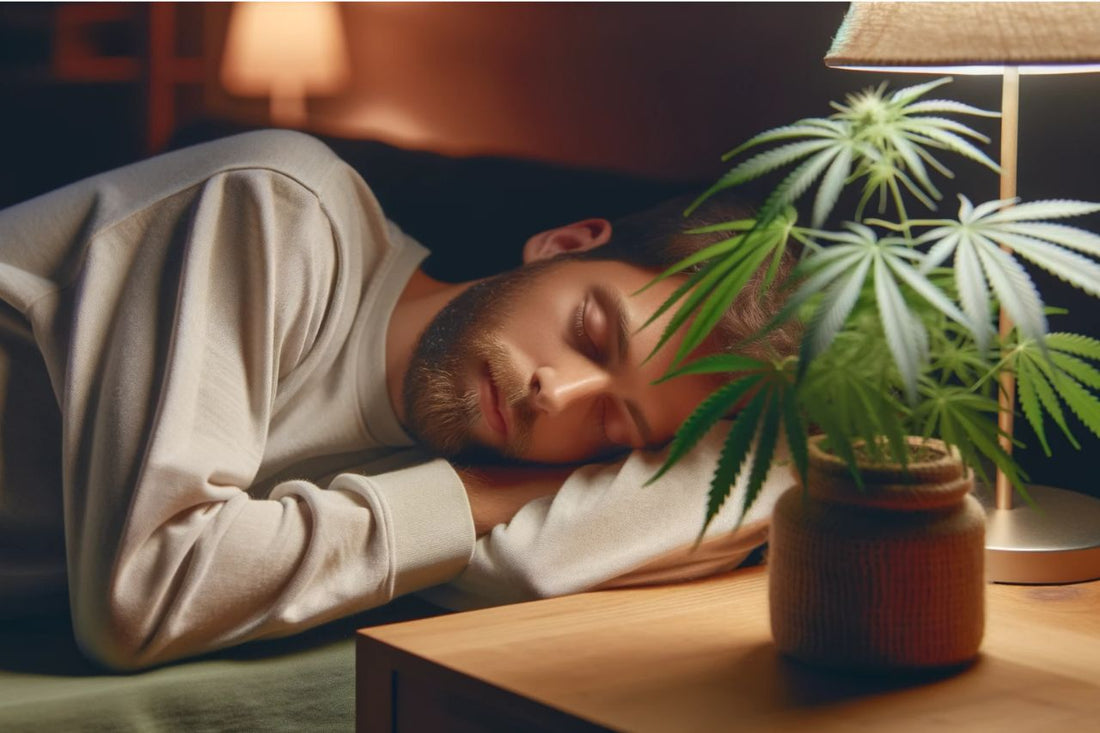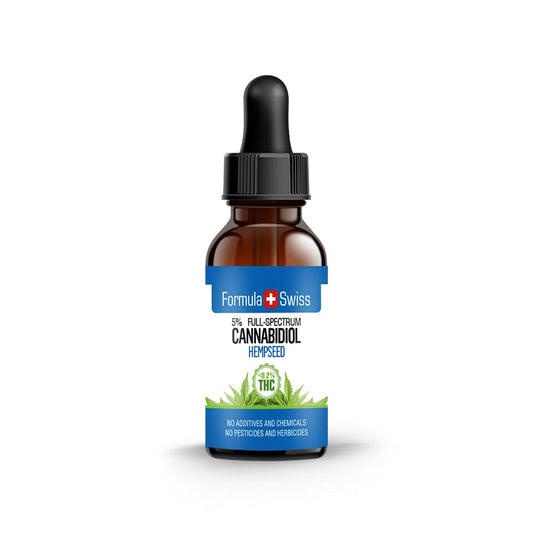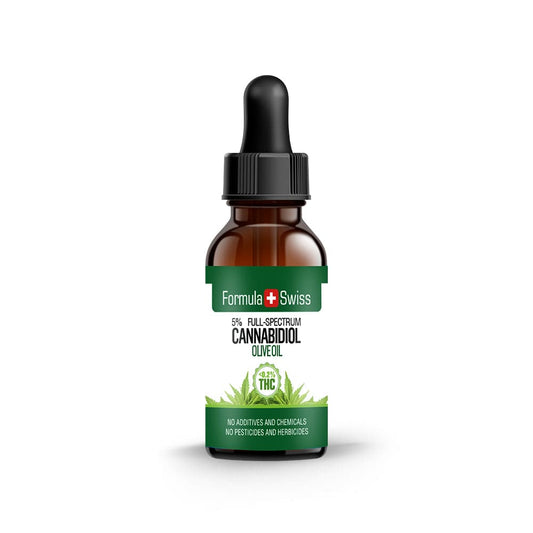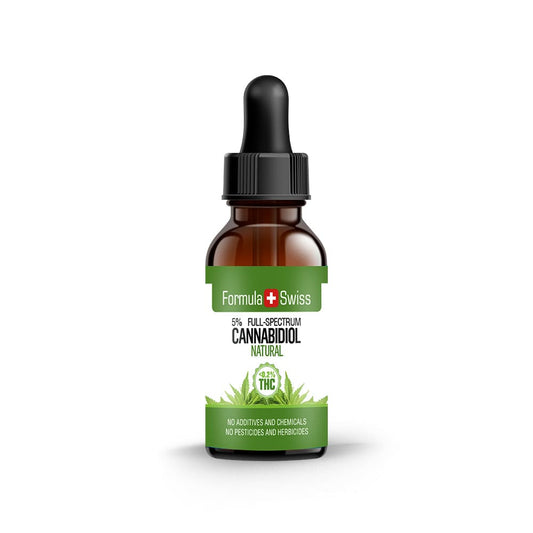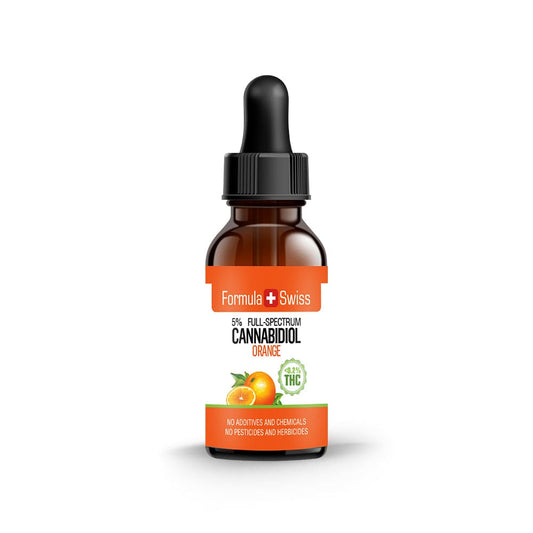The Influence of Cannabis on Sleep and Dreams
Using hemp products as a sleep aid has been popular since ancient times and is excellently researched today, suggesting it might be worth a personal trial. But how exactly do intoxicating cannabinoids like THC affect our biorhythms, and is weed more helpful for acute or chronic sleep disturbances?
Dosage, Gender, Tolerance: Factors to Consider
There are several aspects to consider when consuming cannabis before bedtime, including dosage, gender, tolerance, age, and even the method of consumption. Cannabis has a direct influence on sleep and dreams, so what's the current scientific consensus, and what should one particularly pay attention to when trying it out?
Psychoactive THC as a Sleep Aid?
While other cannabinoids like the non-psychoactive, physically stimulating CBD are also in the spotlight of sleep research, CBN is primarily considered a promising sleep-inducing compound from the hemp plant.
Growing cannabis for sleep is an option for those who prefer natural remedies over chemical ones. With the right hemp strains available in seed shops, many strains have an incredibly high THC content. However, the typical high from cannabis can also be counterproductive and disrupt our sleep.
Dreams might turn into nightmares, and sleep can become less restorative due to improper cannabis intake. Thus, these THC-related effects should not be underestimated.
Biological Foundations of Sleep
Understanding the biological basics of sleep is essential. Sleep, after all, is non-negotiable in the long run. Sleep affects various vital processes, from memory and learning to processing sensory impressions, influencing essential processes around neuroplasticity.
Those who consistently lack sleep will, metaphorically speaking, become less intelligent and eventually ill. However, sleep is not homogeneous and is divided into several phases, even after consuming cannabis.
REM Sleep and SWS Sleep
REM sleep, or "Rapid Eye Movement" sleep, is accompanied by vivid dreams and is essential for our memory. In contrast, "Slow-Wave-Sleep" pertains to deep, dreamless sleep, from which waking up can be quite challenging. During the night, or during other rest periods for shift workers, we go through these two main phases several times.
Cannabis Consumption Promotes Restorative Sleep in the Short and Medium Term
Natural medicine has many proponents and can now be better investigated for potential risks. Cannabis products can vary in their effects, depending on the factors mentioned above and the actual profile of a strain.
Over time, the effect diminishes, which one must always consider when using cannabis as a sleep aid. Although much remains unclear and is currently being intensively researched, tolerance to hashish and marijuana also develops in bed over time. Acute weed consumption can initiate and promote SWS sleep, while chronic intake often triggers opposite effects.
Measurable Sleep Problems During THC Withdrawal
Disturbed sleep is often the main reason people revert to bong and joint consumption. Many can't endure the initial sleep disturbances and suffer from their tolerance. However, discipline in cannabis consumption and occasional breaks are beneficial.
After a brief abstinence, hashish and marijuana feel as pleasant as the first time and fully unleash the power of the contained cannabinoids as a sleep aid.
Tips for Cannabinoids for Sleep, Dreams, and Recovery
Humans and all mammals have an ECS, a kind of network in the body that gets a kind of additional boost when consuming hemp. THC prefers the CB1 receptor, and the psychoactive effects of grass are related to numerous such switches in the brain, where sleep and dreams are also regulated.
Cannabis leads to a different level of ECS receptors in the head. This superficially explains the many diverse healing effects of hemp products and potential unwanted side effects, mainly when withdrawing or consuming for a long time without a break.
Gender and age seem to influence cannabinoids particularly strongly according to research. For dreamless, better sleep through cannabis, occasional, acute intake is primarily recommended. If no break from THC is feasible, more weed is needed in the body over time.
Sleep disorders are guaranteed when stopping, whether short-term or long-term. They also often occur with chronic consumption. However, no one becomes ill from this, and it's best to try out what the hemp plant has to offer individually.
Occasional THC, CBN as an option, and a relaxed setting – cannabis will primarily promote sleep if we consider its active ingredients holistically and structure the intake wisely. No one needs to smoke several buckets to sleep!
Whether micro-dosing cannabinoids with tiny amounts is sufficient must be found out individually, whether old, young, male, or female. Trial and error is a somewhat elaborate but reliable method for gathering experiences, and hemp products can be used accordingly – wishing you a good night and sweet dreams!


